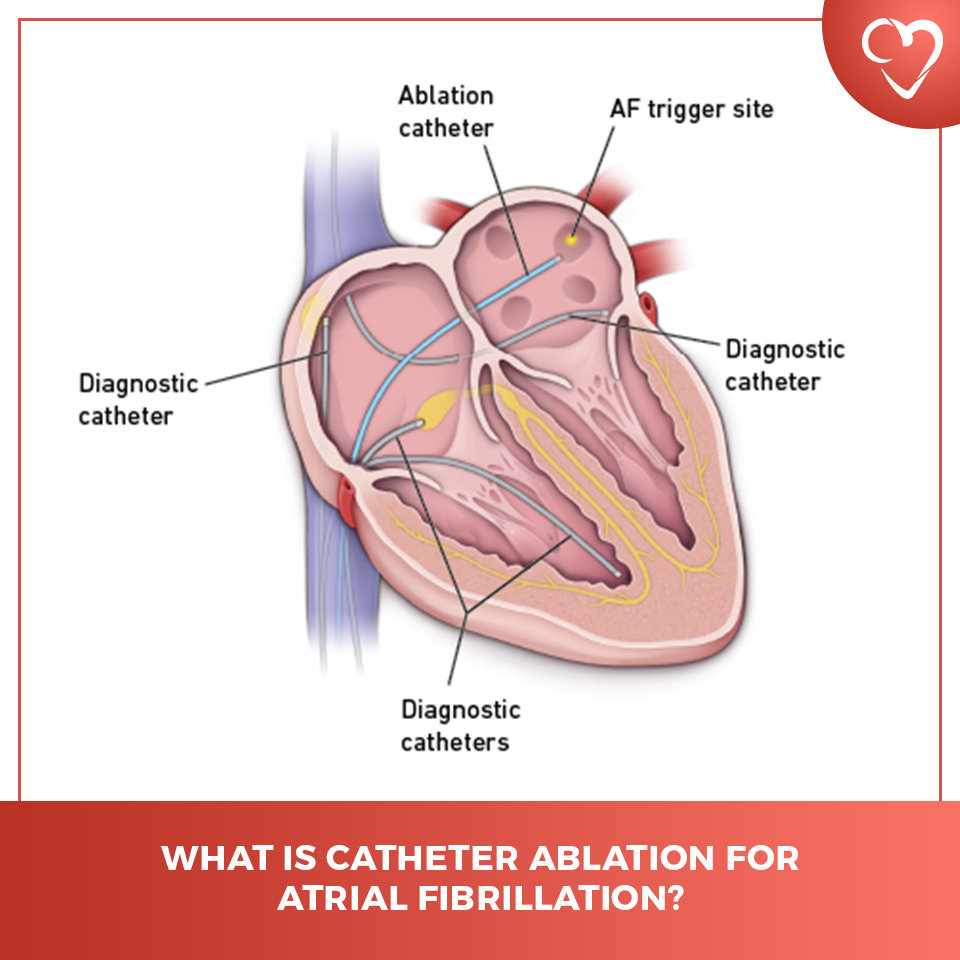
Catheter Ablation is often used to treat heart arrhythmias or atrial fibrillation. According to the National Heart, Lung, and Blood Institute, it is “a procedure that uses energy to make small scars in your heart tissue to prevent abnormal electrical signals from moving through your heart.” While scarring may sound counterintuitive, it actually protects the function of your heart, as it will help to restore a regular heart rhythm again.
When a patient undergoes a catheter ablation, a catheter (which is a very thin, hollow tube) is inserted through a blood vessel near the groin (or sometimes through the neck). Once inserted, a cardiologist (typically an electrophysiologist or EP) will guide the catheter through the body to inside the heart. They will guide it using ultrasound to have a better visual of the catheter. Once in the right position, your doctor will use the catheter to create an ablation on the portions of the heart that are causing irregular electrical impulses and making the heart beat irregularly. After the catheter ablation is done and the scar tissue has been created, blood flow should return to normal.
Patient are closely monitored during recovery. A sheath will typically remain over the insertion site for 6 to 8 hours (the patient must keep his or her leg straight during this time). Aspirin is often prescribed for a few weeks after discharge to prevent clot formation at the site. Your doctor will warn you of any signs and symptoms that you be vigilant of and any precautions one must take.
Learn more about Catheter Ablation for Ventricular Tachycardia and Catheter Ablation for AFib.